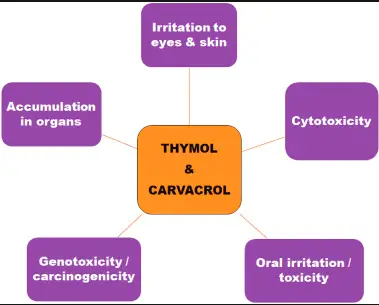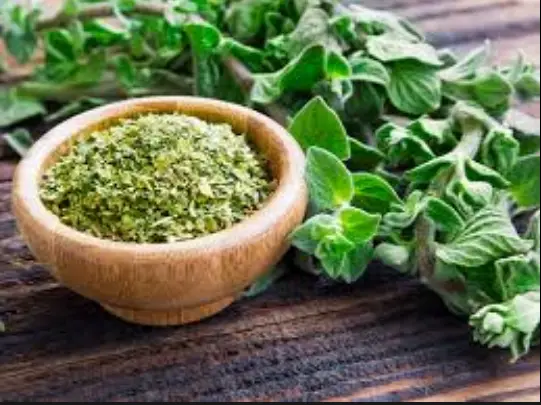Essential oils have long been celebrated for their myriad health benefits and aromatic qualities. Among these, Carvacrol and Thymol stand out due to their potent properties and widespread use in various industries. These naturally occurring compounds are notable for their presence in several aromatic plants and are primarily recognized for their antimicrobial and antioxidant effects.
Carvacrol and Thymol are phenols found in essential oils, derived mainly from thyme, oregano, and other plants. While they share some chemical similarities and benefits, key differences in their molecular structure lead to varied applications and effects. For instance, Carvacrol is generally more potent in its microbial action, whereas Thymol excels in preserving food products due to its stability.
These compounds are not only pivotal in traditional and alternative medicine but also play significant roles in the food and cosmetic industries. Their ability to act against a broad spectrum of pathogens makes them valuable as natural preservatives and therapeutic agents, offering a safer alternative to synthetic chemicals.

Basic Properties
What is Carvacrol?
Carvacrol is a naturally occurring phenolic compound, frequently spotlighted for its robust antimicrobial and antifungal qualities. This compound is a major constituent of the essential oil of oregano, which has been used historically in folk medicine around the globe. Chemically, it is known as 2-Methyl-5-(1-methylethyl)-phenol and has the chemical formula C10H14O. Its structure lends it a distinctive warm, spicy aroma, which makes it not only useful in health care but also desirable in food flavoring and perfume industries.
What is Thymol?
Thymol, like Carvacrol, is a monoterpenoid phenol derived from thymus vulgaris—common thyme—and other plants like oregano. It shares a similar molecular formula, C10H14O, but differs slightly in structure. Thymol is celebrated for its efficacy as an antiseptic and preservative, finding extensive use in both the pharmaceutical and food industries. Additionally, its minty, slightly sweet aroma has made it a favorite in dental care products and mouthwashes.
Chemical Structure
Analysis of Carvacrol
The molecular structure of Carvacrol consists of a hydroxy group (-OH) attached to a phenyl ring at the ortho position relative to a methyl-isopropyl group. This specific arrangement is responsible for its high level of biological activity, particularly its efficacy against bacteria and fungi. The structure allows it to disrupt the cell membranes of microbes, leading to their eventual death.
Analysis of Thymol
Thymol’s structure is notably similar to that of Carvacrol but features a hydroxy group and a methyl group in slightly different positions on the phenyl ring. This variation influences its volatility and water solubility, which in turn affects its antimicrobial potency and application. Thymol’s ability to stabilize protein structures also contributes to its effectiveness as a preservative and antifungal agent.
Natural Sources
Sources of Carvacrol
Carvacrol is primarily found in the essential oils of plants belonging to the Lamiaceae family, such as:
- Oregano (Origanum vulgare)
- Thyme (Thymus vulgaris)
- Peppermint (Mentha piperita)
These plants are commonly cultivated in Mediterranean and Western Asian regions, but their widespread use has led to cultivation in various parts of the world.
Sources of Thymol
Similarly, Thymol is abundant in:
- Thyme oil (from Thymus vulgaris)
- Ajwain oil (from Trachyspermum ammi)
- Oregano oil (from Origanum vulgare)
These sources are valued not only for their culinary uses but also for their therapeutic properties.
Key Benefits
Health Benefits of Carvacrol
Carvacrol has been studied extensively for its health benefits, which include:
- Antimicrobial Effects: It is highly effective against a broad range of bacteria and fungi, making it a potent natural sanitizer.
- Anti-inflammatory Properties: Carvacrol may reduce inflammation by modulating cytokine production and inhibiting the COX-2 enzyme pathway.
- Antioxidant Capacity: It can neutralize free radicals, thereby protecting the body from oxidative stress and boosting overall health.
Health Benefits of Thymol
Thymol shares many of Carvacrol’s benefits but also includes:
- Dental Health: Its antiseptic properties are highly beneficial in preventing dental decay and treating oral infections.
- Respiratory Health: Thymol acts as an expectorant, helping to clear airways and relieve respiratory conditions.
- Food Preservation: Its ability to inhibit microbial growth makes it an excellent natural preservative, ensuring food safety.

Usage in Industry
Carvacrol in Products
Carvacrol’s robust antimicrobial properties make it a preferred ingredient in a variety of products. Its applications are diverse, spanning from food preservation to personal care items. In the food industry, Carvacrol is used to enhance flavor profiles and extend shelf life by inhibiting the growth of pathogens in meats, dairy products, and processed foods. It is also a key ingredient in eco-friendly cleaning products due to its natural disinfectant properties, proving effective against common household bacteria and viruses.
Thymol in Products
Thymol’s potent antiseptic and fungicidal capabilities are leveraged in numerous consumer products. It is a staple in mouthwashes and toothpastes, where it helps control harmful bacteria and reduces plaque buildup. Additionally, Thymol is incorporated into medicinal creams and ointments to treat fungal infections such as athlete’s foot. Its use in the agricultural sector as a natural pesticide speaks to its safety and effectiveness in controlling pest populations without harming beneficial insects.
Safety and Toxicity
Safety Profile of Carvacrol
Carvacrol is generally recognized as safe when used in moderation. However, like all compounds, it must be used correctly to avoid potential side effects. Overuse can lead to skin irritation or allergic reactions in sensitive individuals. When used in food products, Carvacrol concentrations are carefully monitored to ensure they remain within safe limits, as established by health regulations.
Safety Profile of Thymol
Thymol is similarly considered safe for most applications but requires caution in its use. High concentrations can be irritating to the skin, eyes, and respiratory system. Ingesting pure Thymol can be toxic and should be avoided. Products containing Thymol are formulated to ensure that they meet safety standards, minimizing risks while maximizing benefits.
Comparative Analysis
Similarities Between Carvacrol and Thymol
Carvacrol and Thymol share several similarities:
- Both are derived from plants in the mint family and possess strong phenolic structures.
- They are known for their antimicrobial and antifungal properties.
- Both are used extensively in the food, cosmetic, and pharmaceutical industries.
Differences: A Side-by-Side Comparison
While Carvacrol and Thymol are chemically similar, their differences influence their specific applications:
- Carvacrol is more volatile, making it more effective as a food additive and in aromatic therapies.
- Thymol has a higher melting point, which makes it suitable for use in solid products like ointments and balms.
Scientific Research
Recent Studies on Carvacrol
Recent research has explored Carvacrol’s potential in medical treatments, focusing on its ability to combat antibiotic-resistant bacteria. Studies have shown that Carvacrol disrupts bacterial cell membranes, enhancing the efficacy of conventional antibiotics. It’s also being investigated for its potential anti-cancer properties, with preliminary studies indicating that it may help to slow tumor growth.
Recent Studies on Thymol
Thymol has been the subject of studies examining its effect on respiratory conditions. Its properties as an expectorant make it beneficial for treating chronic bronchitis and asthma. Research is also ongoing to explore its role in reducing inflammation and its potential to treat seasonal allergies effectively.
Consumer Tips
Choosing Products Containing Carvacrol
When selecting products with Carvacrol, consider these tips:
- Check labels for concentration levels to ensure they are within a safe and effective range.
- Opt for products from reputable manufacturers that adhere to regulatory standards.
- Consider the source of Carvacrol, as natural extracts are generally preferable to synthetic alternatives.
Choosing Products Containing Thymol
For products containing Thymol, keep the following in mind:
- Ensure that Thymol is listed towards the top of the ingredient list, indicating a higher concentration.
- Look for products certified by health and safety organizations.
- Be aware of any additional ingredients that may affect the desired therapeutic outcomes.
Frequently Asked Questions
What is Carvacrol?
Carvacrol is a monoterpenoid phenol primarily found in the essential oils of oregano, thyme, and pepperwort. It is renowned for its strong antimicrobial properties, making it a key ingredient in natural sanitizing products and alternative medicines.
What is Thymol?
Thymol, similar to Carvacrol, is a natural monoterpenoid phenol evident in the oils of thyme and other plants. It is extensively used not only for its strong antiseptic properties but also in the treatment of fungal infections and as a preservative in food industries.
How are Carvacrol and Thymol used in industries?
Both compounds find extensive applications across various sectors. Carvacrol is utilized in the pharmaceutical industry for its antibacterial and antifungal properties, while Thymol is often incorporated into products like mouthwashes and pesticides due to its efficacy as an antiseptic and fungicide.
Can Carvacrol and Thymol be synthesized?
While both Carvacrol and Thymol are naturally occurring compounds, they can also be synthesized in laboratories to ensure purity and consistency in commercial applications, particularly in the pharmaceutical and food industries.
Conclusion
Carvacrol and Thymol, though chemically related, exhibit distinct characteristics that make them invaluable in both traditional medicine and commercial applications. Their versatile properties enable them to play crucial roles in health and industry, making them compounds of interest for ongoing scientific research and development.
These phenolic compounds underscore the importance of natural products in today’s scientific and health sectors. With ongoing studies and advancements, Carvacrol and Thymol continue to demonstrate their significant potential, solidifying their place as essential components in the natural products pharmacopeia.

